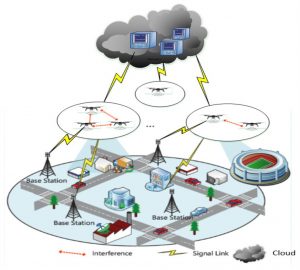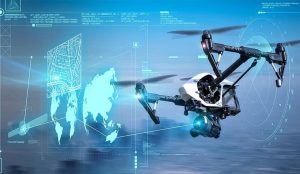 Cybersecurity for drones is a critical area of concern as unmanned aerial vehicles (UAVs) become increasingly integrated into various industries, including agriculture, infrastructure inspection, surveillance, and delivery services. Here are some current trends in cybersecurity for drones:
Cybersecurity for drones is a critical area of concern as unmanned aerial vehicles (UAVs) become increasingly integrated into various industries, including agriculture, infrastructure inspection, surveillance, and delivery services. Here are some current trends in cybersecurity for drones:
- Authentication and Access Control: With the proliferation of drones, ensuring that only authorized users can access and control them is paramount. Implementing robust authentication mechanisms, such as biometric authentication or two-factor authentication, helps prevent unauthorized access and misuse of drones.
- Encryption of Communication Channels: Drones rely on wireless communication channels to transmit commands and data between ground control stations and the UAV itself. Encrypting these communication channels using strong encryption protocols ensures that sensitive information remains secure and protected from eavesdropping or tampering by malicious actors.
- Secure Firmware and Software Updates: Regularly updating drone firmware and software is essential to patch known vulnerabilities and enhance security. However, ensuring the authenticity and integrity of these updates is crucial to prevent the installation of malicious firmware or software. Implementing secure update mechanisms, such as code signing and secure boot, helps mitigate the risk of unauthorized or tampered updates.
- Anti-Jamming and Anti-Spoofing Technologies: Drones are vulnerable to signal jamming and GPS spoofing attacks, which can disrupt their navigation systems and compromise their operational integrity. Integrating anti-jamming and anti-spoofing technologies, such as frequency hopping spread spectrum (FHSS) and advanced GPS authentication techniques, helps protect drones from such attacks and ensures reliable operation in hostile environments.
-
 Payload Security: Drones often carry payloads, such as cameras, sensors, or packages, that may contain sensitive data or equipment. Securing these payloads against unauthorized access or tampering is essential to protect the integrity and confidentiality of the data they collect or transmit. Employing encryption and access control mechanisms for onboard storage and communication interfaces helps safeguard payload data from unauthorized access.
Payload Security: Drones often carry payloads, such as cameras, sensors, or packages, that may contain sensitive data or equipment. Securing these payloads against unauthorized access or tampering is essential to protect the integrity and confidentiality of the data they collect or transmit. Employing encryption and access control mechanisms for onboard storage and communication interfaces helps safeguard payload data from unauthorized access. - Cyber Threat Intelligence and Detection: Proactively monitoring for cyber threats targeting drones and analyzing threat intelligence data allows organizations to identify and mitigate potential security risks before they escalate into serious incidents. Leveraging threat detection technologies, such as intrusion detection systems (IDS) and anomaly detection algorithms, helps detect and respond to suspicious activities or anomalies indicative of cyber threats.
- Regulatory Compliance: Compliance with regulatory requirements and industry standards, such as those set forth by aviation authorities and cybersecurity frameworks, is essential for ensuring the safe and lawful operation of drones. Organizations must stay abreast of evolving regulatory landscapes and adapt their cybersecurity practices to align with applicable standards and guidelines.
-
 Collaborative Security Initiatives: Collaboration among stakeholders, including drone manufacturers, service providers, regulatory agencies, and cybersecurity experts, is crucial for addressing emerging cybersecurity challenges and developing effective countermeasures. Participating in collaborative security initiatives and information-sharing platforms facilitates knowledge exchange and collective efforts to enhance the cybersecurity resilience of drones and the broader UAV ecosystem.
Collaborative Security Initiatives: Collaboration among stakeholders, including drone manufacturers, service providers, regulatory agencies, and cybersecurity experts, is crucial for addressing emerging cybersecurity challenges and developing effective countermeasures. Participating in collaborative security initiatives and information-sharing platforms facilitates knowledge exchange and collective efforts to enhance the cybersecurity resilience of drones and the broader UAV ecosystem.
By addressing these trends and implementing robust cybersecurity measures, organizations can mitigate the risk of cyber threats and ensure the safe and secure operation of drones across various applications and industries.























































